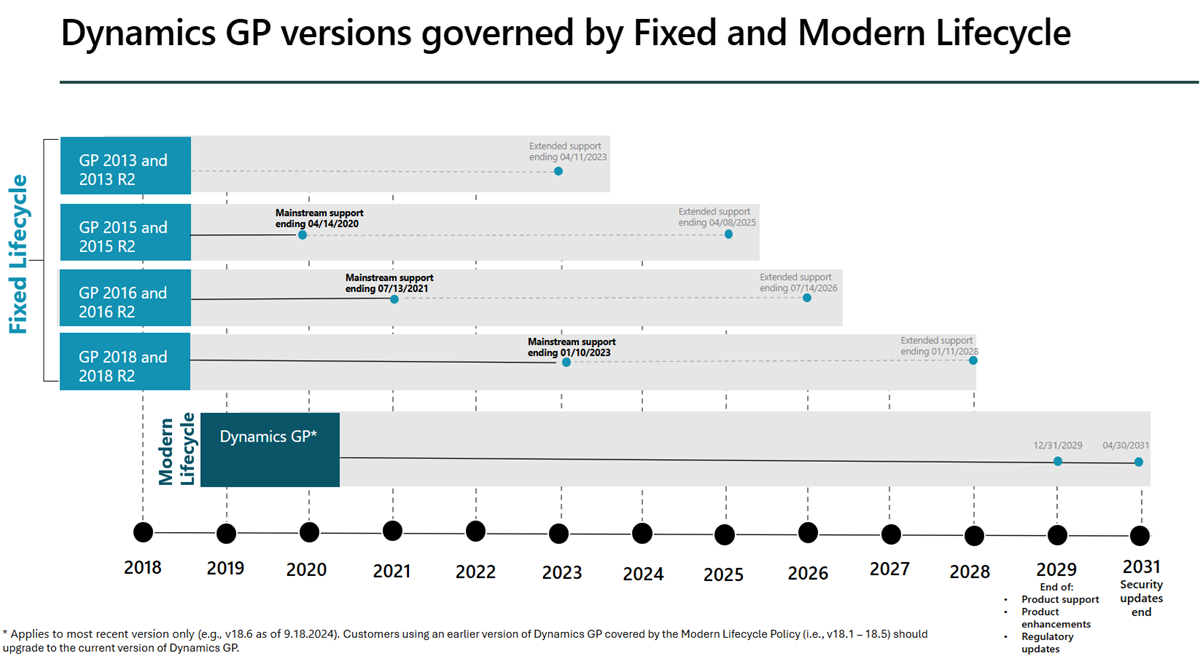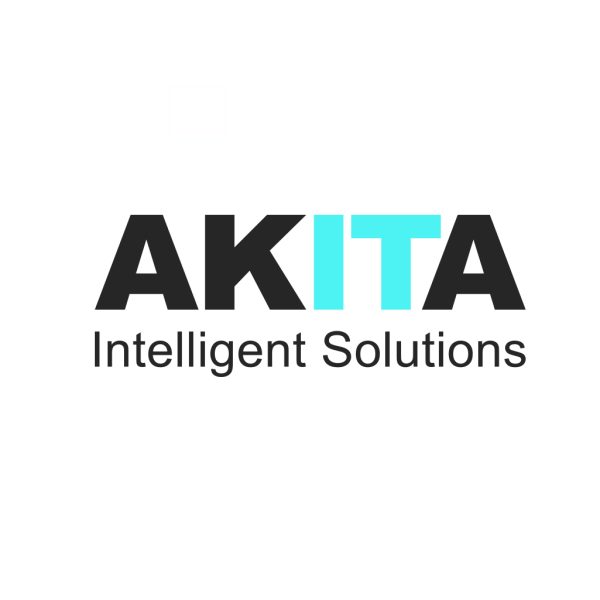Microsoft has confirmed that Dynamics GP, formerly known as Great Plains, is approaching the end of its lifecycle.
While not an immediate shutdown, the product is now in a sunset phase, with limited development and a gradual decline in support. For businesses still reliant on Dynamics GP, this announcement carries significant strategic implications.
In this blog, we’ll break down the latest on the Dynamics GP end of life, explore what it means in real terms for users, and outline the best course of action for businesses looking to maintain operational continuity.
What Does 'End of Life' Mean for Dynamics GP?
“End of life” doesn’t mean that Dynamics GP will suddenly stop working. Instead, it refers to Microsoft’s shift away from ongoing innovation, product enhancements, and—in time—mainstream support. While updates will continue under Microsoft’s Modern Lifecycle Policy for now, these will increasingly focus on security and regulatory fixes rather than functional improvements.
Microsoft has already stopped actively marketing Dynamics GP and has made it clear that its future investment lies in cloud-based alternatives—particularly Dynamics 365 Business Central, which is now its flagship ERP offering for SMEs.
A Timeline of Key Milestones
Understanding the support timeline is essential for planning your next steps:
-
2021 onwards: Microsoft moved Dynamics GP to the Modern Lifecycle Policy, providing three updates per year focused on tax, regulatory compliance, and critical security patches.
- 2023: Dynamics GP 2013 and 2013 R2 leave extended support.
-
2025: End of mainstream support for the latest Dynamics GP 2015 and 2015 R2 versions under the Fixed Lifecycle Policy.
- 2026: End of mainstream support for the latest Dynamics GP 2015 and 2015 R2 versions
-
2028 and beyond: End of extended support for older versions, signalling a total cessation of updates for legacy users.
While updates under the Modern Lifecycle Policy may continue for some time, businesses are strongly advised to begin transition planning. Microsoft has explicitly stated there will be no future versions or feature improvements to Dynamics GP.

The Business Risks of Staying on Dynamics GP
Relying on software nearing its end of life carries several operational and strategic risks:
1. Security Vulnerabilities
As support dwindles, so too will regular security updates. This leaves businesses exposed to data breaches, cyber attacks, and compliance failures—particularly damaging for those handling financial data.
2. Integration and Compatibility Challenges
Modern applications and third-party tools are less likely to support Dynamics GP going forward. Compatibility with Microsoft 365, Power Platform, and Azure services will become increasingly strained.
3. Reduced Vendor and Partner Support
ERP vendors and Microsoft partners are already pivoting their resources away from GP. Finding skilled support, customisation, or integration expertise will become more difficult and more expensive.
4. Stifled Innovation
Running outdated software limits your ability to innovate. Businesses that stay on Dynamics GP risk falling behind competitors adopting more agile, cloud-based systems.
Should You Upgrade, Replace or Maintain?
When assessing your next steps, it helps to consider the three main paths forward:
Option 1: Continue with Dynamics GP (Short Term Only)
If your business is heavily invested in GP and has recently upgraded to the latest version, you may opt to continue in the short term. However, you must understand this is a temporary holding pattern—not a strategic solution.
Option 2: Upgrade to Dynamics 365 Business Central
Microsoft Dynamics 365 Business Central is the logical successor to GP. It’s a cloud-based ERP system designed for SMEs, with a broader suite of finance, operations, sales and project tools. Business Central provides:
-
Seamless integration with Microsoft 365, Power BI, and Azure
-
Modern UI and mobile access
-
Scalable architecture for future growth
-
Continuous updates and innovation via Microsoft’s cloud-first roadmap
Business Central also allows for phased migration of data, meaning businesses can reduce risk and disruption during the switch.
Option 3: Consider Other ERP Platforms
While Microsoft strongly recommends Business Central, some businesses may evaluate alternative ERP solutions like NetSuite, Sage Intacct or SAP Business One.
However, this is typically only appropriate for organisations undergoing a broader strategic transformation or with highly bespoke requirements. Particularly based on how favourable Microsoft's new ERP solution compares to these products.
Why Business Central Is the Future
Microsoft’s strategic focus on Dynamics 365 Business Central makes it the strongest candidate for long-term ERP stability and innovation. Compared to GP, Business Central offers:
-
Built-in AI for forecasting and cashflow management
- Continuous updates with no need for manual upgrades
-
Automation capabilities through Power Automate
-
A browser-based experience with mobile access
- Real-time dashboards and analytics with Power BI
Its cloud-based delivery model also lowers infrastructure costs, reduces IT overhead, and enhances scalability.
How to Begin the Transition from Dynamics GP
Transitioning from a legacy ERP isn’t a one-click process. It requires careful planning, change management and a clear view of business requirements. Here’s how to start:
1. Audit Your Current GP Setup
Understand what customisations, third-party add-ons, and business processes are currently tied to GP. This will influence your choice of new ERP platform and inform migration planning.
2. Engage a Microsoft Partner
Working with an experienced Microsoft Dynamics partner ensures access to technical expertise and best-practice guidance. A partner can assess your current GP environment, build a tailored migration roadmap, and deliver the implementation with minimal disruption.
3. Set a Timeline and Budget
The Dynamics GP end-of-life timeline gives you a clear deadline—but the earlier you act, the less pressure you’ll face. A properly scoped migration project should account for data transfer, user training, testing, and post-go-live support.
4. Prepare Your Team for Change
Internal adoption is key to ERP success. Begin engaging stakeholders now and ensure training is built into the migration project plan. Modern cloud platforms offer new efficiencies—but only if users know how to exploit them.
Dynamics GP End Of Life: Ready to Start the Transition?
The end of life for Dynamics GP isn’t a threat—it’s an opportunity. Businesses willing to act early can take advantage of more efficient systems, better integrations, and future-ready ERP capabilities.
Waiting too long risks business continuity, rising support costs, and growing compliance liabilities. With Microsoft’s roadmap firmly rooted in the cloud, now is the time to modernise and secure your competitive edge.
If you're still running Dynamics GP, now is the time to begin your migration journey. Our ERP consultants specialise in helping organisations smoothly move from legacy platforms to cloud-first solutions like Dynamics 365 Business Central.
Get in touch to arrange a free ERP assessment and explore the best fit for your business needs:





